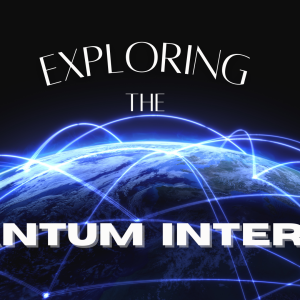What is Wireless Power Technology?
The concept is as simple as the name suggests: wireless energy transmission technology provides power to a device without any physical connection.
Electronics companies have increasingly prioritized wireless technology research and development for many years. Several strong reasons validate these investments. Physical connections can be impractical, particularly if space constraints limit system or design configuration options. Wireless transmission provides power even when conventional wired energy delivery mechanisms aren’t feasible. This technology opens the doors to innovative configurations and device designs. Eliminating the entry and exit points of power leads within a device’s external casing leads to more robust solutions that are better suited to withstand harsh environments. There are many other ways wireless solutions for power delivery benefit the product design process, but how does wireless power transmission work in practice?
From idea to reality, how wireless power technology evolved

Wireless power transfer has existed in small devices for many years. RFID tags, telemetry, and satellite communications all transfer a low amount of power in operation without using wires of any kind. This approach to wireless energy transmission, built on near-field communication technology, is a part of daily life for most of us. Wireless charging devices for mobile phones and other devices are some of the most common examples of the way this technology continues to permeate every aspect of technology.
Near-field communication technology continues to drive innovations. This method of wireless energy transfer has its limitations. These device work when operated within the required range of a power source to transfer microwatts or milliwatts. Higher-powered solutions that deliver higher wattage, however, require more sophisticated and robust mechanisms for longer-range energy transmission. Longer-range wireless energy transmission technology remains a vital focus of development.
Inductive Coupling
Inductive coupling, an invention of Nikola Tesla dates back more than 100 years. Tesla proved this concept of wireless high-power transfer. That basic idea for induction transfer, however, has been refined dramatically. Induction transfer is the technology that many developers and engineers focus on today in pursuit of ‘true’ wireless operations of larger devices.
Inductive coupling uses magnetic fields to transfer power from a transmitter to a receiver. In theory, magnetic fields could power devices over significant distances. One idea of such a system is a centralized wireless power source capable of powering home devices. Installing such a device could eliminate the need for batteries, a significant source of landfill toxicity, in devices such as TV remote controls.
Capacitive Coupling
Capacitative coupling leverages electrical fields for the transmission of power. Unfortunately, this technology has stagnated in recent years due to the extremely high voltages required to achieve effective transmissions. If scientists can overcome these issues, advantages include a less directionally critical alternative to induction-based mechanisms. Minimizing directionality broadens the application possibilities. So far, researchers have successfully charged batteries wirelessly and powered small-scale biomedical implants. Future applications to explore include developing mechanisms that exchange power between layers of an integrated circuit.
Far-Field Power Transfer
While there are many variations on the near-field transmission of power currently in development, far-field solutions remain challenging. Researchers continue towards the possibility of power transfer across much larger distances, potentially extending reach by multiple miles.
Far-field power transfer technology transmits power using visible laser or microwave radiation. Experiments with this technology have delivered incredible results. Power transfers of multiple kilowatts via lasers have been achieved over a distance of 1 kilometer. Microwave-induced transmission spans more than half a mile. Practical applications include a microwave system approved for use that delivers approximately 1 watt of power through over-the-air wireless charging. Such applications could power small IoT devices such as sensors, trackers, and monitors.
NASA remains the main driver of far-field laser-based technology development, recognizing the advantages of this system for myriad critical applications. Because this system features a visible laser directed at a receiver of photovoltaic cells, the risk of power supply disruption due to radio interference has been virtually eliminated. This revolutionary emerging technology is relatively distance-agnostic, delivering impressively consistent efficiency across the full range of distances.
NASA powered a model plane in flight using a laser tracking the object in real-time. NASA researchers are currently working on a system to charge UAVs in flight, but far-field laser technology continues to challenge even NASA engineers. Photovoltaic cells deliver only 50% efficiency during energy conversion. Unfortunately, this results in a 50% power loss at maximum efficiency. Additional challenges include developing a wireless transfer mechanism for far-field laser transmissions that do not require a direct line of sight.
Wireless Power: now and into the future
Research and experiments within the realm of wireless power transmission suggest scientists are on the cusp of transforming a range of current applications within the foreseeable future.
Though charging airplanes in flight may be many years into the future, wireless power transmission will increasingly impact the way we think about power and interact with technology. The use of microwave power transmission for IoT devices is a particular highlight. This endeavor is fully licensed by the FCC and in the process of rolling out. Microwave power transmission for IoT devices is likely the first real-world application of wireless power transmission that we will see – but it will not be the last.
Interested in the latest trends and innovations in technology? The Mectronic blog is your source for trusted insight into the technology world. Check our blog for regular updates!

Mectronic has been connecting sellers and buyers for 25 years. With powerful search tools and over 2 billion products, Mectronic helps you find the B2B components you need from sources you trust. Find the parts and components you need today here!





